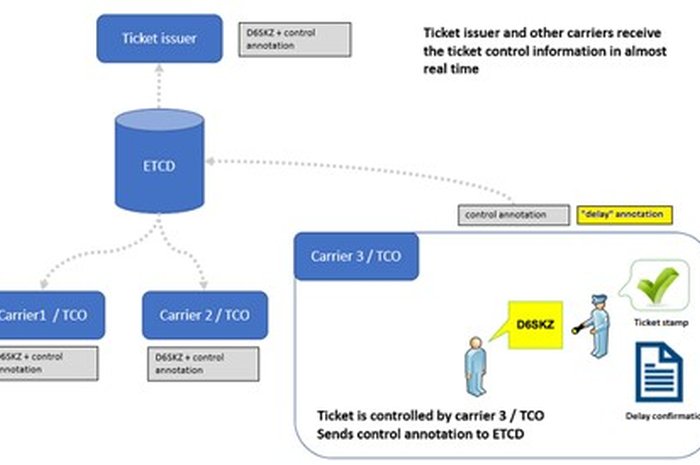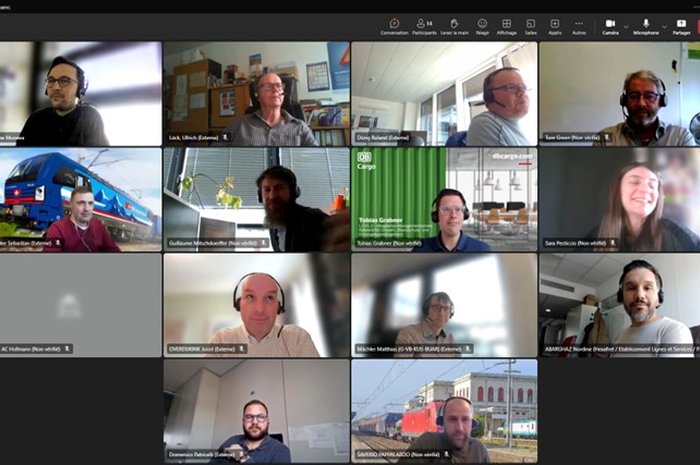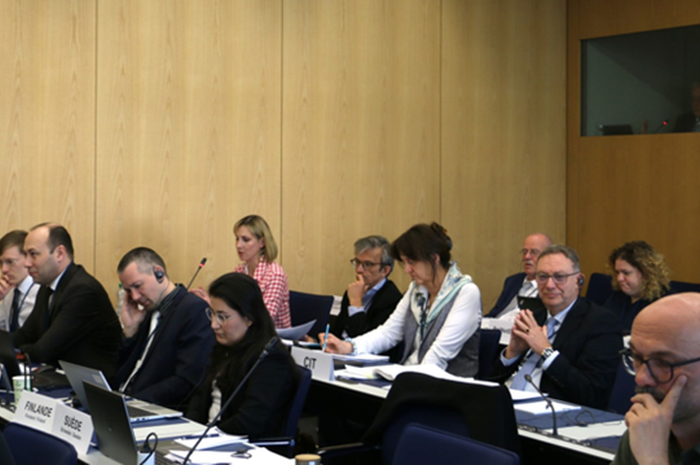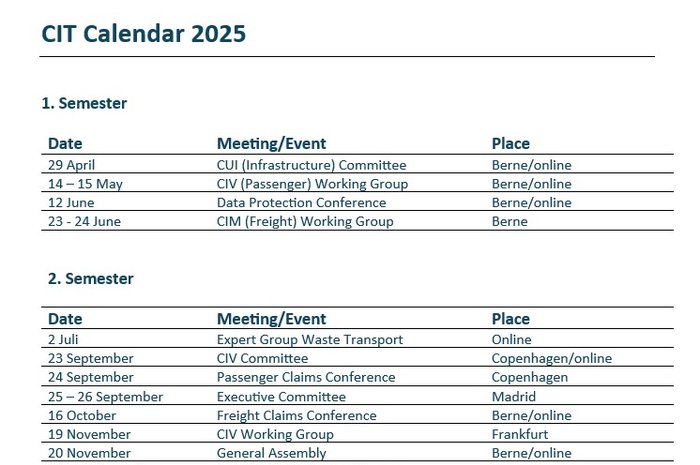→ Issues Overview
1/25
2025, a year of legal evolution to follow
Eisenbahntransportrecht
Personenverkehr
- CIV Working Group focuses on developments in EU legislation and on international level
- The goal for 2025: digitalisation of the Agreement on Journey Continuation (AJC)
Güterverkehr
- CIM Committee takes strategic decisions in 2025
- Latest developments from the Expert Group on Waste Shipments
- News from the CIT Expert Group on “Seals”
- OTIF proposals for the COTIF 1999 revision: meeting of the Ad hoc Committee on Legal Matters and International Cooperation
Infrastrukturnutzung
Rechtsanwendung
- How is the unique sending identifier in the CIM consignment note established?
- Preliminary ruling on data protection and ticketing
CIT itself
Editorial

 Eisenbahntransportrecht
Eisenbahntransportrecht
 Personenverkehr
Personenverkehr
 Güterverkehr
Güterverkehr
 Infrastrukturnutzung
Infrastrukturnutzung
 Rechtsanwendung
Rechtsanwendung
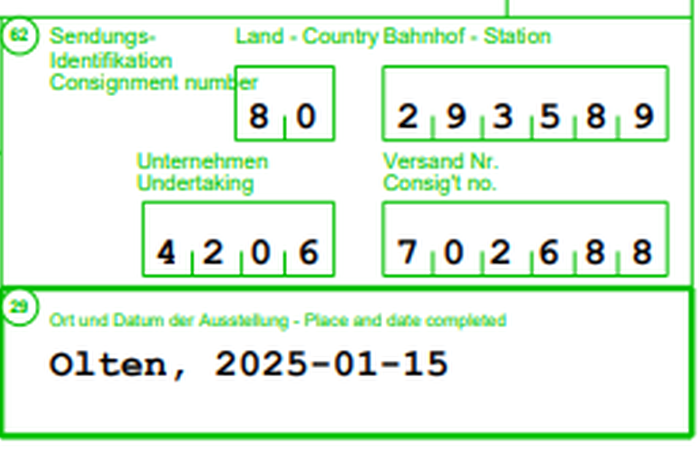
How is the unique sending identifier in the CIM consignment note established?
How is the unique sending identifier in the CIM consignment note established? As carriage documents progressively go digital, consignment identification is becoming an increasingly relevant issue. Under Article 6 § 3 CIM, “The consignment note shall be signed by the consignor and the carrier. The signature can be replaced by a stamp, by an accounting machine entry or in any other appropriate manner.” The solution found and implemented for the CIM consignment note at CIT level was the sending identification number. This is a combination of digits comprising the country code + station code + carrier code at departure + consignment number in accordance with field 62 of the CIM consignment note (GLV-CIM ) and is included in the CIM consignment note matrix (see below). The consignment number is a 5-position number followed by a check digit. The check digit is calculated using a Luhn algorithm. To obtain this, each digit in the consignment number is alternately multiplied by 2 or 1, reading from left to right. This gives the checksum. The difference between the checksum and the next-highest multiple of 10 gives the check digit. Example: the consignment note number is 70268. The checksum is calculated using the values of each digit, as follows: 7 x 2 = 14 which becomes 1 and 4 for checksum purposes through to 8 x 2 = 16 which becomes 1 and 6 for checksum purposes. Checksum calculation: 1 + 4 + 0 + 4 + 6 + 1 + 6 = 22. The next-highest multiple of 10 is 30. The check digit is thus 30 – 22 = 8 as shown in the screenshot above. This system generates a practical and secure URL (Uniform Resource Locator) number meeting the needs of rail freight carriers in cross-border freight traffic without the need for costly electronic signature processes which have also proven unsuited for banking documents. 2025-03-31 erik.evtimov@cit-rail.org
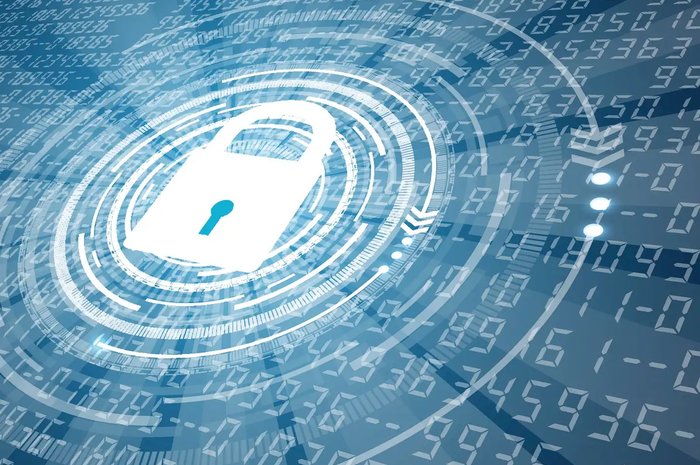
Preliminary ruling on data protection and ticketing



